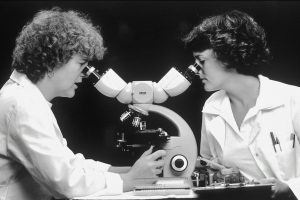Why Connected Safety Systems Change Rescue Operations
In any emergency situation, the top priority is rescuing and protecting lives. Every second counts and any delay can have serious consequences. That’s why rescue operations have always been an essential part of emergency response strategies. However, with the rise of technology, the way we approach rescue operations has evolved significantly. When it comes to saving lives, having the right tools and resources can make all the difference. That’s where connected safety systems come in.
The Evolution of Rescue Operations
Gone are the days when rescue operations were solely dependent on physical strength and bravery. With the advancement of technology, rescue operations have become more efficient and effective. From using drones for search and rescue missions to equipping firefighters with high-tech gear to combat fires, technology has greatly improved the capabilities of emergency responders. But one of the most revolutionary changes in rescue operations has been the introduction of connected safety systems.
What are Connected Safety Systems?
Connected safety systems refer to a network of devices and sensors that are constantly in communication with each other. These devices could be anything from personal protective equipment (PPE) to advanced GPS tracking devices. The main purpose of these systems is to provide real-time data and alerts to emergency responders, helping them make more informed decisions and take swift and accurate action.
Connected safety systems are not just limited to one specific industry or use, they can be applied in various fields such as firefighting, industrial safety, and even disaster management. These systems have completely changed the rescue operation landscape and have proven to be a game-changer in saving lives.
The Impact of Connected Safety Systems on Rescue Operations
Improved Situational Awareness
The most significant impact of connected safety systems on rescue operations is improved situational awareness. These systems provide emergency responders with real-time data, giving them a better understanding of the situation at hand. For example, in a fire emergency, sensors installed in a building can provide information on the location and intensity of the fire, enabling firefighters to plan their strategy accordingly.
Rapid Response Time
Connected safety systems have greatly reduced response time in emergency situations. With devices constantly sending updates and alerts, emergency responders can quickly assess the situation and take action. This is especially crucial in situations where time is of the essence, such as gas leaks or natural disasters.
Enhanced Communication
Communication is key in any emergency response situation. Connected safety systems enable real-time communication between emergency responders, making coordination and collaboration much easier. This eliminates any delays or miscommunication that could hinder the progress of the rescue operation.
Improved Safety for First Responders
Along with saving lives, connected safety systems also prioritize the safety of first responders. These systems provide information on the conditions of the emergency site, alerting responders of any potential hazards. This allows them to take necessary precautions and avoid any risks, making their job safer.
The Future of Rescue Operations
The use of connected safety systems in rescue operations is still in its early stages, but the potential for growth is massive. With the emergence of the Internet of Things (IoT) and more advanced technology, these systems will continue to evolve and improve. In the near future, we can expect to see predictive analytics playing a major role in emergency response, further enhancing the capabilities of connected safety systems.
In Conclusion
Connected safety systems have revolutionized the way we approach rescue operations. They have greatly improved the safety and effectiveness of emergency response and have proven to be a vital component in saving lives. As technology continues to advance, we can only expect these systems to get better, making the world a safer place for all.











